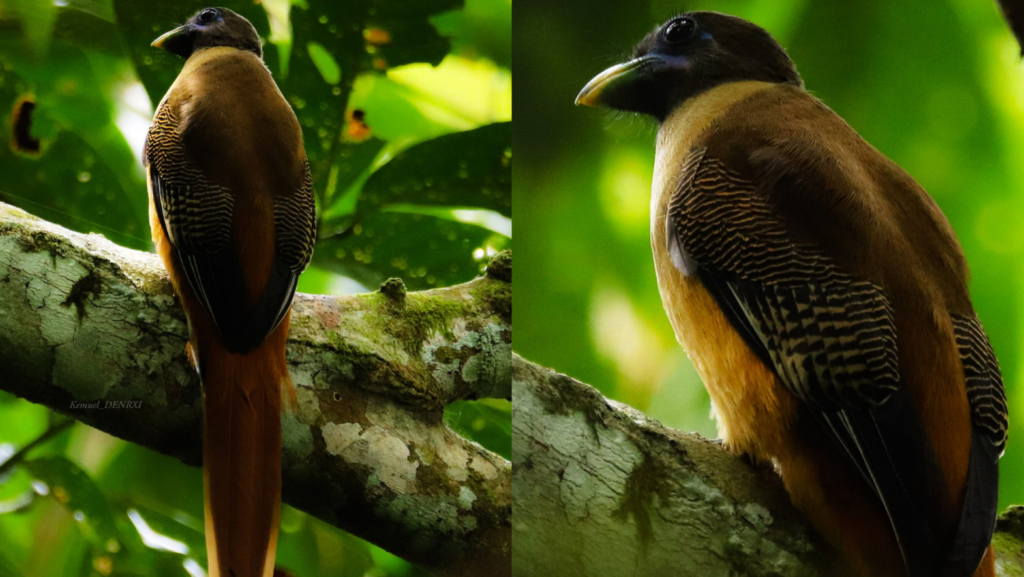Meanwhile in Mt. Apo, a real-life ‘Ibong Adarna’ has been spotted

In the tropical forests of the Philippines’ highest peak, an “Ibong Adarna” (or Philippine trogon) exists | Photos from Kemuel Libre of DENR-PAMBCS-XI/DENR Davao
The Department of Environment and Natural Resources shared that an ‘Ibong Adarna’ exists in the tropical forest of the Philippines’ highest peak.
Before diving into “Noli Me Tangere” and “El Filibusterismo,” students would usually immerse first in “Ibong Adarna” as a major reading requirement for Filipino classes. In the 16th-century epic poem, the Kingdom of Berbania’s people is persistently searching for the magical bird (which can turn someone into stone) on the Piedras Platas tree, mainly because of its healing powers. While this story is fiction, there’s actually a real-life version of the iconic bird.
On July 14, the Department of Environment and Natural Resources (DENR) of the Davao region shared on Facebook that an actual “Ibong Adarna” or Philippine trogon (with scientific name Harpactes ardens) can be seen in the tropical rainforest wrapping Mindanao’s Mt. Apo the dormant stratovolcano that is also considered the Philippines’ highest peak.
“While the male Philippine trogon displays bright colors, the female ones possess subdued shades of mustard-yellow underparts and an olive-brown head. They feed on insects and fruits and shelter on tree hollows,” DENR Davao described. “Being reluctant to people, they found bliss in the darker portions of our forests.”
You may also like: Famous Filipino Video Game Characters You Should Know
The enigmatic ‘Ibong Adarna’ as seen in photos
The post also contains a few photos of the spotted female “elusive, long-tailed avian” on a tree branch, taken by Kemuel Libre of DENR-Protected Area Management and Biodiversity Conservation Section (PAMBCS) XI. The gallery also features a reference photo of the Philippine trogon’s male version by Jonet Carpio. They have a stark difference in colors but are both majestic nonetheless.
In the same post, DENR Davao called the public to “protect and preserve” these legendary birds, which are endemic to the Philippines.
As of 2019, the DENR tallied 60 critically endangered species, which includes 32 birds.
One of those currently on the brink of extinction is the Philippine eagle, with only 400 pairs left in the wild, according to the Philippine Eagle Foundation in a 2023 Inquirer.net report.

